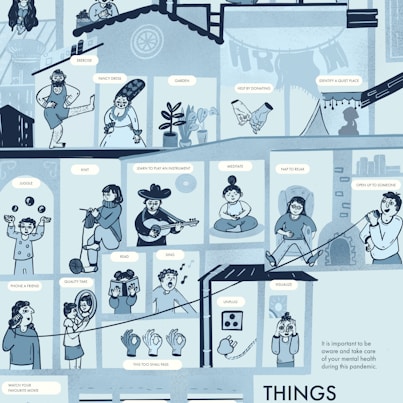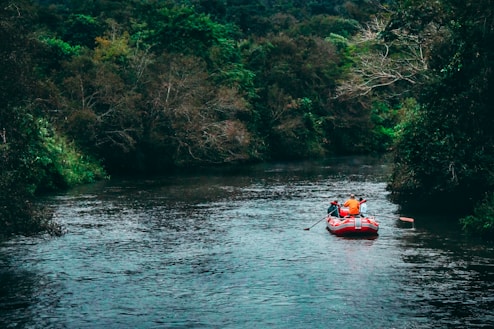
Originally Posted by Ronna Wineberg in Psychology Today.com July 09, 2020
Managing change and transitions.
All of us need life rafts, and we have them whether we’re aware of them or not. We have people who love us. A community or activities that nurture us. Help us regain our strength. That literally save us when we’re drowning, dealing with difficulties in our lives. That speak to a deeper part of ourselves.
Whenever we experience transitions and changes in our lives or in the world, we need to embrace the life rafts we already have or create new ones. Transitions and upheavals will always occur—whether we’re dealing with a pandemic, a natural disaster, social unrest, personal or health issues, or other events.
Sometimes we don’t have sufficient life rafts. We may have to struggle to orient ourselves then. If we don’t have the support we need, we have to work that much harder to create new life rafts.
And sometimes our support systems unexpectedly fail us. We can’t always rely on them. We have to rely on our own inner resources and take whatever steps are necessary to develop connections and support.
Mothers often are our first life rafts. My mother was my first loving, sympathetic ear. I turned to her not so much for her to solve problems but to listen. And she mostly did. In good times and bad. But parents age and decline. When she was 74, she became ill with a difficult cancer, undergoing surgeries and treatments. Our roles reversed. We lived in different states, spoke on the telephone every day, and I visited her often. I became her life raft and maintained that role until she died. I had to find others to sustain me.

Not all mothers have the temperament or ability to be a life raft. A mother may be a life raft at one juncture but not at another. A father, other family members, or friends can assume that role. A supportive teacher, a coach, or a therapist can be a life raft, too.
Life rafts change as time passes, and we may have many at once. My husband and children have been life rafts for me as well. Our family moved often for my husband’s work, and we all supported each other during every relocation. But he and I divorced. I’ve had to create new life rafts. This took time, thought, effort, and overcoming my own fears and concerns.

Life rafts aren’t permanent and can unexpectedly disappear. A friend of mine is in her 70s, divorced, without children. Her two closest friends aren’t able to give her the support she needs now. They view current events and politics differently than she does; this has created a strong conflict. Therefore, it’s been more difficult for her to find emotional support. Other friends are becoming life rafts for her. She’s working hard to nurture this network and give emotional support as well. And she’s also putting energy into trying to repair the problems with her two closest friends.
Creating relationships that are life rafts is a process and often takes time. These relationships need to be nurtured and are filled with reciprocal obligations and responsibilities.

At different points in our lives, we need to stop, take a deep breath, and ask, “What do we really want? How can we nurture ourselves?” Midlife is one of these junctures. Those of us with families can see an end to the child-rearing years. Those who have poured energy into work may be dealing with a flourishing career. We may be ready for new challenges. Or we may be faced with disappointments and difficult challenges. As we navigate the shifts, losses, and changes in these middle years, we can take the opportunity to inventory our life rafts. We can actively choose those that reflect our best hopes and dreams. Discard what no longer works. We may surprise ourselves and rediscover what delighted and comforted us as children. Or shift weight on those rafts we already have in place.

And as we travel through midlife into our 60s and beyond, we can ask these questions, too. Treasured, dependable life rafts change again—people move, become ill, or die, and we experience our own internal changes. We have to remain flexible and open to finding new sources of emotional support.
No matter what stage of life we are at—in our 20s or 80s—we can ask these same questions and take time to inventory our life rafts. Here are some ways to find your life rafts.

Inventories. Set aside quiet time. Write down what life rafts you’ve relied on in the past. Do they still work? Imagine ones you’d like in the future. Remember what helped you cope with difficult challenges in the past and list them.
Assessments. Recognize those life rafts you may have overlooked, that already exist in your life. This is especially important if the life rafts you’ve relied on aren’t available now or no longer give you the support you need. What makes you feel happy and comforted? A good friend with whom you jog? A choir you sing with? A religious service? Meditation? Sports? Volunteering? Art? Music? Writing? Theater? A special place in nature? You may be surprised by the people who become life rafts when circumstances change. Another friend of mine found that her work became a life raft, nurturing her and giving her a focus at a challenging time.

Opportunities. Whether you choose to discard a life raft or circumstances demand that you do, it can be very difficult to let go of the familiar. It’s disappointing and painful when life rafts no longer work. We all grieve for what we leave behind. Stay open to the new and to those things that may not have interested you in the past. Explore possibilities—webinars, classes, discussion groups, volunteer opportunities. Explore possibilities with friends and acquaintances. Look for opportunities in your community and online, in activities that interest you, and in your field of work.

Staying afloat. If you decide to change life rafts or discover that your old ones aren’t working, take a leap of faith, be confident that new rafts will support you. If a new one doesn’t feel sturdy, look for another. Remember, old rafts may still be in the water, just not holding the weight they did in the past. And if your old life rafts aren’t available or aren’t working anymore, attempt to let go of them—at least for now—as difficult as that can be. Explore the world around you, and find ways to create new life rafts that will sustain you.
Photos are courtesy of Ronna Wineberg unless otherwise noted.


Be the first to comment